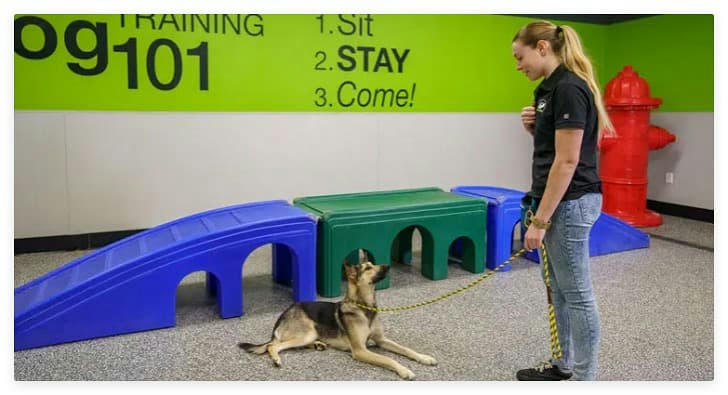Start a High-Paying Career with Pet Training Courses
Are you passionate about animal behavior? Do you dream of becoming a professional pet trainer, helping pets and their owners build a better relationship? The pet training industry is growing rapidly, with high demand and great earning potential. Even if you don't have a background in this field, you can quickly enter it through specialized training courses. This article will recommend four types of courses to help you enter this lucrative career with minimal barriers.
Pet trainers are one of the fastest-growing professions in the animal care industry. According to the U.S. Bureau of Labor Statistics, the demand for pet trainers is expected to rise significantly by 2032, outpacing the average growth rate for other industries. More importantly, the median annual salary for pet trainers can reach $50,000, and those working at top-tier pet training centers or celebrity trainer teams can earn over $80,000 annually.
1. Professional Certification Course: International Pet Groomers (IPG) Certification
Course Highlights
The pet training certification program from the International Pet Groomers (IPG) is considered the gold standard in the industry. These courses typically last from 6 months to 1 year and cover the following:
Basic and Advanced Behavioral Science: From basic training techniques to solving complex behavioral problems, the courses cover a broad range of topics.
Practical Experience: Students get hands-on experience working with different types of pets.
Certification Preparation: IPG certification exams help prepare students to become certified trainers.
Application Process:
1.Visit the IPG website and browse the course catalog (application link at the end of the article).
2.Choose the appropriate certification program.
3.Submit high school transcripts and recommendation letters.
4.Complete an admissions interview and exam.

2. Apprenticeship Program: Earn While You Learn
Recommended Program
Some professional pet training organizations (such as The Dog Trainer College and Karen Pryor Academy) offer apprenticeship programs:
Paid Internship: Students work alongside professional trainers, gaining real-world experience while earning a paycheck. Interns typically work 1-2 days a week.
Additional Certifications: In addition to the core pet training course, students can earn additional certifications in behavior science, fear-based training, and more.
Employment Assurance: Many partnering organizations provide job referrals after graduation, helping students secure employment in the field.
Course Advantages:
No Tuition Loans: Students can use their income during the apprenticeship to cover up to 70% of their tuition costs.
Industry Connections: Students can connect with top-tier trainers and pet care institutions during their internships.
3. Flexible and Efficient Online Courses: Learn Pet Training Anywhere, Anytime

Petco Academy Online Platform
Ideal for those looking to switch careers or individuals who already have jobs:
On-Demand Learning: Offers over 200 hours of video courses covering topics like basic behavioral training, problem behavior correction, and service dog training.
Professional Certification: After completing the course, students can receive certifications from the International Pet Groomers (IPG) or other reputable organizations.
Cost-Effective: Compared to traditional in-person courses, online learning can save up to 70% in tuition fees.
4. Government-Sponsored Low-Cost Courses
Some community colleges and non-profit organizations offer subsidized courses:
Veteran Programs: Veterans can apply for education benefits through the Department of Veterans Affairs to cover the cost of pet training courses.
Workforce Innovation and Opportunity Act (WIOA) Grants: Residents of certain states can apply for WIOA funding, which can cover up to $10,000 in training costs.
Community College Subsidies: For example, some community colleges offer pet training programs with much lower tuition costs, and some can be partially funded through government assistance.

Why Choose Pet Training?
Increasing Demand
As pet ownership continues to rise, more and more pet owners are recognizing the importance of pet training, especially in behavior issues and the psychological needs of household pets.
The demand for pet training is expected to double by 2030, especially in high-demand areas like behavior correction and service dog training.
Career Flexibility
Pet trainers can work in various settings, including pet training schools, veterinary clinics, private studios, animal shelters, and more.
Experienced pet trainers can earn up to $80,000 annually, and the profession offers a high level of work flexibility and freedom.
Tech Empowerment—Leading the Future of Pet Training
Modern pet training is incorporating advanced technologies such as behavior analysis software and wearable devices, allowing trainers to analyze and provide customized training solutions.
Practical Entry Guidelines
1.Evaluate Your Budget: Compare the costs of government subsidies, online courses, and traditional in-person programs to find the most cost-effective option for you.
2.Choose Your Focus: Do you want to specialize in family pet training, or are you more interested in challenging areas like service dog training?
3.Apply for Trial Classes: Many pet training schools offer trial classes to help you get a feel for the course content and teaching methods.
4.Build Industry Connections: Join professional pet trainer associations, attend industry conferences, and expand your network in the pet care community.
When you see a well-trained dog behaving perfectly with its owner, you’ll experience the sense of accomplishment and value that comes with being a pet trainer. Now is the best time to enter this field through specialized courses—high salary, career freedom, and the opportunity to change pets’ and families' lives are all within your reach. Don’t wait any longer—click the course link now and start your career as a pet trainer today!
